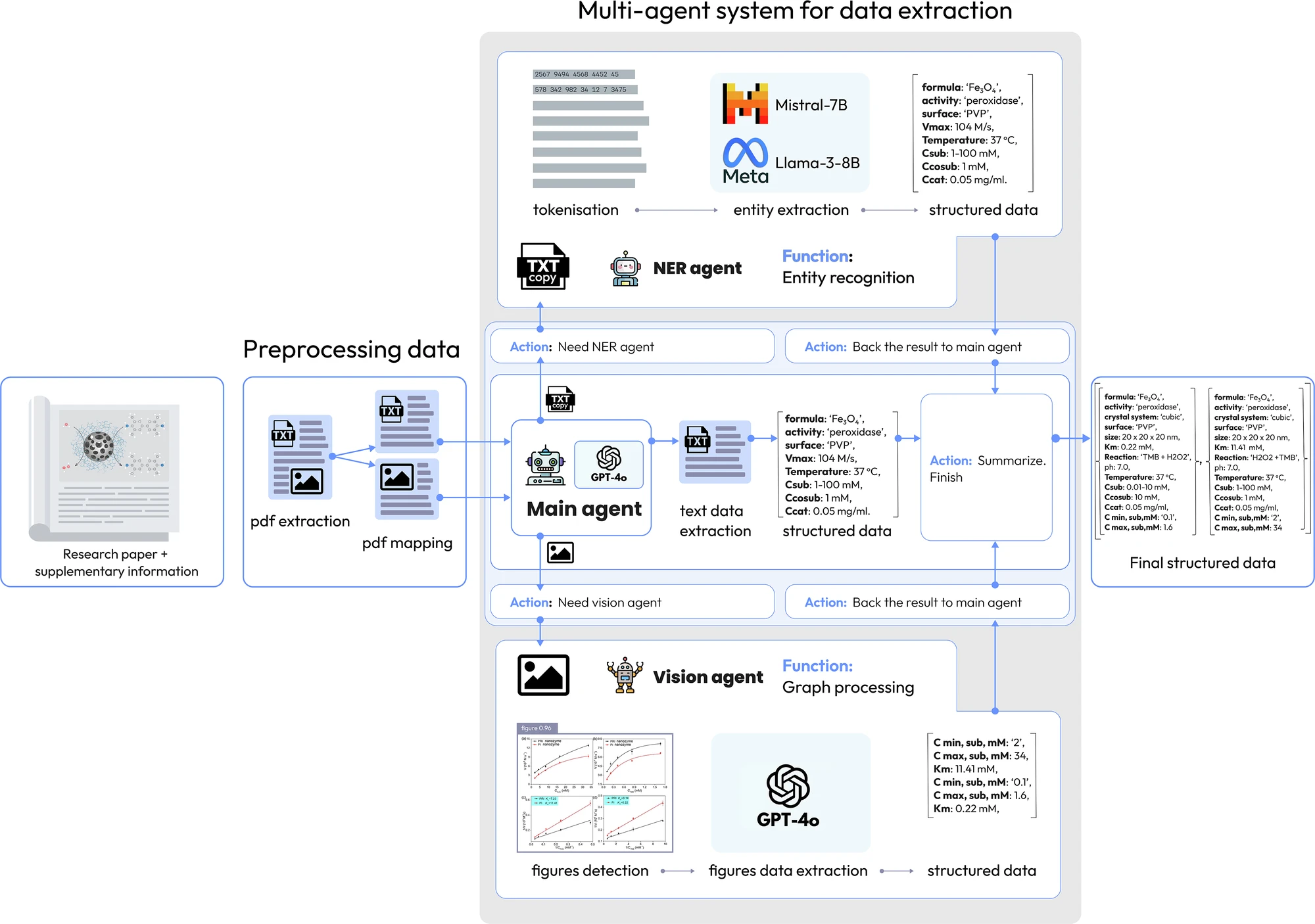Revolutionizing Nanomaterials Research with AI: nanoMINER's Multi-Agent Leap

Published: June 2025
Source: Nature Computational Materials
The rapid growth of nanomaterials research poses a daunting challenge: how can we efficiently extract structured, actionable data from a tidal wave of scientific literature? A new study presents nanoMINER, an advanced multi-agent AI system that leverages multimodal large language models (LLMs), natural language processing, and computer vision to tackle this task with high precision and minimal human intervention.
The Birth of nanoMINER
nanoMINER is a modular AI framework built around a central ReAct agent that coordinates specialized sub-agents responsible for vision processing, named entity recognition (NER), and text parsing. Unlike traditional single-stream LLMs, this architecture allows nanoMINER to simultaneously extract complex data from figures, tables, and unstructured text across full scientific articles.
The system was benchmarked against state-of-the-art models including GPT-4.1 and smaller reasoning agents like o3-mini. Despite using an older model (GPT-4o) as its main coordinator, nanoMINER achieved superior performance—reaching up to 0.98 precision in key metrics, and demonstrating outstanding recall when extracting kinetic parameters, molecular formulas, crystal systems, and surface modifications.
Nanomaterials and Nanozymes: Real-World Impact
nanoMINER was evaluated on two datasets:
- Nanomaterials dataset: Focused on extracting basic material descriptors such as formulas, sizes, and surface coatings. The system achieved remarkable accuracy, even predicting crystal structures from chemical formulas with 86% accuracy.
- Nanozymes dataset: Targeted catalytic activity parameters like Km, Vmax, and concentration ranges. nanoMINER consistently outperformed baseline models by extracting visual and contextual data, even when embedded in complex figures.
Its ability to match or exceed human annotation for datasets with hundreds of experiments in seconds—compared to hours of expert labor—demonstrates the transformative potential of agent-based AI systems in materials science.
Why Multi-Agent Systems Matter
The study shows that dividing complex tasks into specialized agents enables not just better performance, but more modularity, flexibility, and robustness. The coordinating ReAct agent allows each sub-agent to focus on what it does best, whether it's interpreting graphs with YOLO+GPT-4o or extracting formulas using fine-tuned Mistral and Llama models.
This architecture represents a major step toward fully automated extraction pipelines in not only materials science but also biomedicine, chemistry, and environmental science.
Open Science, Real Impact
The team behind nanoMINER has made their code and data open-source at github.com/ai-chem/nanoMINER, inviting researchers to replicate, adapt, and extend the system. Its modular design makes it adaptable for future use cases, including magnetic, therapeutic, and environmental nanomaterials.
For researchers overwhelmed by literature reviews and data curation tasks, nanoMINER offers a glimpse into a future where AI doesn't just assist science—it accelerates it.
Original article: Agent-based multimodal information extraction for nanomaterials
Sponsored by PWmat (Lonxun Quantum) – a leading developer of GPU-accelerated materials simulation software for cutting-edge quantum, energy, and semiconductor research. Learn more about our solutions at: https://www.pwmat.com/en
📘 Download our latest company brochure to explore our software features, capabilities, and success stories: PWmat PDF Brochure
📞 Phone: +86 400-618-6006
📧 Email: support@pwmat.com

Comments
Post a Comment